In this episode, Cody Bales, BESLER Reimbursement Manager, provides us with a glimpse into BESLER’s upcoming Webinar, Understanding the S-10 Worksheet, that we’re hosting live on Wednesday, July 16, at 1 PM ET.
Podcast (hfppodcast): Play in new window | Download
Learn how to listen to The Hospital Finance Podcast® on your mobile device.Highlights of this episode include:
- What Worksheet S-10 is
- What the impact of Worksheet S-10 is for reimbursement
- What data sources are needed for S-10 reporting
- Pitfalls for providers in pulling together the data
- Tips and best practices
- Changes to the S-10 Worksheet that providers should be aware of
Kelly Wisness: Hi, this is Kelly Wisness. Welcome back to the award-winning Hospital Finance Podcast. We’re pleased to welcome back Cody Bales, BESLER Reimbursement Manager. In this episode, Cody will provide us with a glimpse into BESLER’s upcoming Webinar, Understanding the S-10 Worksheet, that we’re hosting live on Wednesday, July 16, at 1 PM eastern time. Welcome back, and thanks for joining us, Cody.
Cody Bales: Good to be with you today, Kelly.
Kelly: Yeah, it’s good to have you. So, let’s go ahead and jump in. So, Cody, what is Worksheet S-10?
Cody: Worksheet S-10, it is part of the Medicare Cost Report, and it’s used to calculate and report a hospital’s uncompensated care cost for the cost report year. Now, the worksheet does utilize an overall cost-to-charge ratio, which flows in from other areas of the cost report. There are different sections for varying sources of uncompensated care, Medicaid, charity, bad debt, and so on. The charity section includes a breakout for uninsured versus insured patients. So all of the amounts that providers must enter on the worksheet are essentially write-offs during the cost report year for each of those categories. And the end result of the worksheet is an overall unreimbursed, uncompensated care cost or UCC.
Kelly: Thank you for sharing that with us. So, what is the impact of Worksheet S-10 for reimbursement?
Cody: So, Worksheet S-10 has really taken on a very significant role for reimbursement, where prior to, I think, 2018, it was only informational. So just to offer some brief background, the DSH payments that hospitals traditionally received were modified as part of the ACA so that providers would receive 25% of the old DSH total, and providers would then receive a newly established uncompensated care add-on based on a new formula created by CMS. That’s where the importance of worksheet S-10 comes in. The new formula uses three factors, with factor three being developed or calculated based on the amounts reported on a provider’s S-10. Essentially, an individual hospital’s UCC from Worksheet S-10 is divided against the national UCC to create their factor three, which in turn impacts how much a provider will receive for the new uncompensated care add-on adjustment. There’s a little more nuance than that, but that’s basically how it works.
Kelly: Okay, thank you. That sounds significant. So what data sources are needed for S-10 reporting?
Cody: The data needed for S-10 will primarily come from patient accounting records. So, completion of S-10 is going to rely heavily on being able to obtain voluminous patient detail and the ability to properly run reports and get that data from the patient accounting system. The amounts that must be entered on S-10 will be adjustments or write-off transactions, most importantly for charity and for bad debt. But note that much more information than that will be needed as the exhibits that are required to support S-10 include fields for charges, payments, additional adjustments on the account, patient demographics and so on. So again, providers will really need to be able to pull a lot of detail from patient accounting.
Kelly: Got it. So, are there any pitfalls or specific challenges for providers in pulling together the data?
Cody: I think one of the biggest things is properly identifying transactions from patient accounts, basically categorizing transactions to fit the definition of the fields called for in the exhibits and in turn for S-10 reporting. This process requires reimbursement involvement and really should not rely on tables or definitions that are set outside the knowledge of the reimbursement department. For example, if you have prompt pay discounts or courtesy discounts, you would want to ensure that those are not getting identified as charity write-offs in the definitions that you’re using. And then on the flip side, you, as reimbursement personnel, will want to ensure that you understand the existing charity and financial assistance policies set at the organization level and really understand how those write-offs are being posted in conjunction with those policies. This can really be critical in not missing anything that qualifies as uncompensated care. Another potential issue I’ll mention quickly is if you have Medicare accounts being written off with a charity code, and then you’re picking up those as indigent write-offs for Medicare bad debt purposes, then you would want to, for S-10 purposes, pick up those accounts as bad debt for Exhibit 3C rather than charity.
Kelly: Okay. Thank you for sharing those challenges with us. So, do you have any tips or best practices to share with us?
Cody: Sure. I mentioned the proper categorization of transactions, but a good approach is really to take a few further steps to ensure that if included for charity or bad debt, the patient accounts transactions can be fully supported by transaction detail for audit and do not have missed postings that would render the account invalid. Another step is to carefully verify the insurance status reported for patient accounts. With the new exhibits, this is not as simple as just insured versus uninsured. The payments and other transactions and characteristics on the account may dictate what the proper insurance status codes should be. And just overall, the exhibits really require a combination of demographic data, historical transaction amounts, and current year write-offs. So, you really want to make sure that you’re using tools to efficiently pull everything together and prepare those exhibits while still ensuring data integrity and audit readiness.
Kelly: Wonderful. We love best practices. Thanks for sharing those with us. So, are there any recent changes to the S-10 Worksheet that providers should be aware of?
Cody: Yeah, so it isn’t terribly recent at this point, but an obviously big change was the required exhibits, which I’ve kind of touched on. These have specific columns to support the amounts reported on S-10 for charity and bad debt. So that’s Exhibit 3B and 3C. These exhibits must now be submitted at the time of cost report filing. So that’s a change from prior. Some of this information providers were already used to polling, but some of it is also a little bit deeper and has caused some challenges for providers. Also new with Transmittal 18 was the creation of the new line 25.01, which essentially serves as a mechanism to carve out the portion of write-offs that are not specified as deductibles or co-insurance by the patient’s insurer. So, as I said, these requirements have been there for a couple of years now, but we’re really just seeing the audits ramp up with these new changes in place. So, we’ll continue to observe how the Macs approach the audits and take a look at the exhibits and use the worksheet changes for, like I said, these new audits.
Kelly: Well, awesome. Well, thank you so much for joining us, Cody, and for sharing this sneak peek into the upcoming webinar, Understanding the S-10 Worksheet, that we’re presenting live on Wednesday, July 16, at 1 PM eastern time. And as a bonus, you can earn CPE. Thanks again, Cody.
Cody: Thanks for having me on.
Kelly: And thank you all for joining us for this episode of The Hospital Finance Podcast. Until next time…
[music] This concludes today’s episode of The Hospital Finance Podcast. For show notes and additional resources to help you protect and enhance revenue at your hospital, visit besler.com/podcasts. The Hospital Finance Podcast is a production of BESLER | SMART ABOUT REVENUE, TENACIOUS ABOUT RESULTS.
If you have a topic that you’d like us to discuss on the Hospital Finance podcast or if you’d like to be a guest, drop us a line at update@besler.com.





